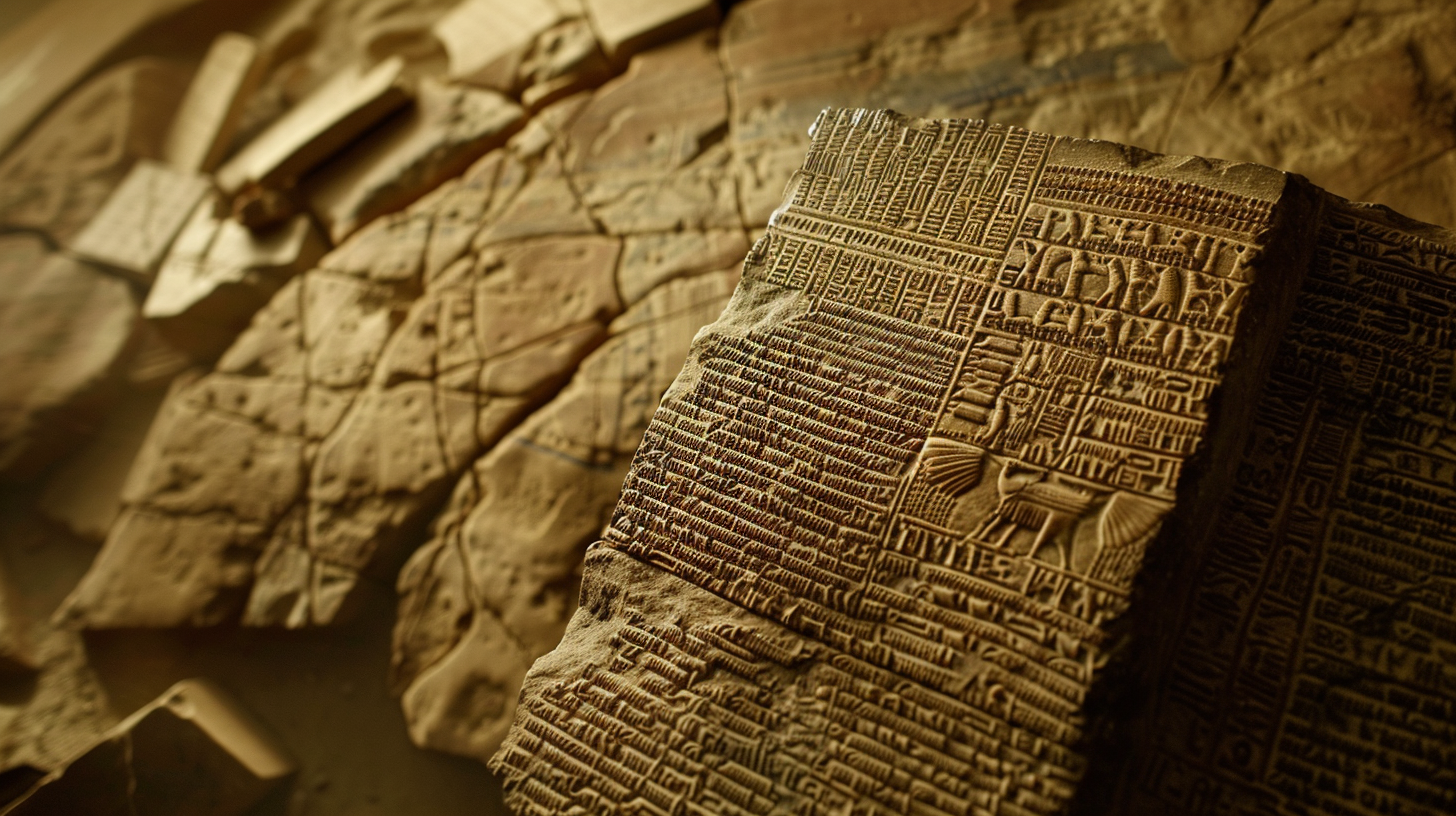The ancient Sumerians, inhabitants of Mesopotamia, stand as one of the earliest civilizations known to history. Among their many accomplishments, their advanced knowledge of mathematics and technology has long perplexed scholars and historians. From the invention of writing to the development of complex irrigation systems, the Sumerians’ achievements hint at a level of sophistication that some believe could only be achieved with outside assistance. Could it be that the Sumerians received help from extraterrestrial beings to acquire their intricate knowledge of mathematics and technology?
At the heart of the debate is the remarkable mathematical and technological prowess demonstrated by the Sumerians in various fields. In mathematics, the Sumerians developed a sophisticated numerical system based on a sexagesimal (base-60) system, which formed the basis for modern concepts such as time measurement and geometry. Their use of cuneiform writing to record numerical data and mathematical calculations further illustrates their mastery of mathematical concepts.
Moreover, the Sumerians’ advancements in technology were equally impressive. They pioneered the use of the wheel for transportation and irrigation, revolutionizing agriculture and trade in the region. Additionally, their construction of ziggurats and other monumental structures showcased their engineering prowess and understanding of architectural principles.
Proponents of the theory that the Sumerians received outside assistance in their mathematical and technological endeavors point to several pieces of evidence to support their claim. One such piece of evidence is the sudden emergence of advanced knowledge and technology in Sumerian civilization, seemingly appearing out of nowhere. Some argue that this rapid development is indicative of outside intervention, as it would have been unlikely for a relatively primitive society to achieve such feats independently.

Furthermore, supporters of this theory highlight anomalies in Sumerian texts and artifacts that suggest encounters with beings possessing advanced knowledge or technology. For example, some Sumerian texts contain accounts of gods descending from the heavens in flying vehicles, reminiscent of modern descriptions of UFO sightings. Additionally, depictions of humanoid figures wearing what appear to be suits and helmets resembling modern spacesuits have led some to speculate about extraterrestrial contact.
In addition to textual and artistic evidence, proponents of the extraterrestrial assistance theory point to parallels between Sumerian advancements and technological achievements in other ancient civilizations. From the pyramids of Egypt to the megalithic structures of South America, similar questions arise about how these civilizations acquired their knowledge and technology.
However, skeptics offer alternative explanations for the Sumerians’ mathematical and technological achievements, emphasizing the ingenuity and resourcefulness of the ancient civilization. They argue that the Sumerians were highly skilled observers and problem-solvers who developed their knowledge through trial and error, observation of natural phenomena, and practical applications.
Furthermore, critics caution against attributing the achievements of ancient civilizations solely to outside intervention, as it risks diminishing the agency and contributions of human ingenuity. They argue that the Sumerians, like other ancient cultures, were capable of remarkable feats of innovation and discovery without the need for extraterrestrial assistance.
Another perspective on Sumerian mathematics and technology suggests that their advancements were the result of cultural exchange and interaction with neighboring civilizations. Mesopotamia was a melting pot of cultures, with trade routes connecting Sumerian city-states to distant lands. It is plausible that the Sumerians borrowed ideas and techniques from other cultures, adapting them to suit their own needs and circumstances.
In conclusion, the debate surrounding the Sumerians’ intricate knowledge of mathematics and technology reflects the enduring fascination with ancient civilizations and their achievements. Whether the Sumerians received outside assistance or not, their legacy endures as a testament to human ingenuity and the enduring quest for knowledge and innovation. As we continue to study and interpret the artifacts and texts left behind by the Sumerians, one thing remains certain – the mysteries of this ancient civilization continue to inspire wonder and curiosity, inviting us to explore the boundaries of human achievement and the possibility of outside influence.

27 thoughts on “Unraveling the Enigma of Sumerian Mathematics and Technology: Ancient Ingenuity or Extraterrestrial Aid?”
Comments are closed.